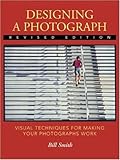Michael Eastman’s book, 
Vanishing America, is a warm, visual elegy to small town America and vintage pop culture. Theaters, signs, stores and other everyday interactions are shown in rich detail with saturated colors. The collection is curated across 10 sections: theaters, churches, hangouts, doors, signs, stores, services, automobiles, hotels and restaurants.
Each section is reverent to its subject matter. Where some photographers would show decay and the end of life, Eastman focuses on bringing the subjects to life, preserving them as a visual time capsule. Even those subjects that appear derelict, such as the doors and signs, they don’t feel cynical. Theaters, hangouts, signs and automobiles receive the most in depth portraits. From section to section, the subject matter transitions well. From the secular to the things that lead us there and back to the places where we converge, Eastman sees where socialization and relating to others occurred.
Brinkely’s introduction is poetic, describing how Eastman found beauty in decay.
Of note, as reverent as Eastman is towards his subject matter, his book was printed in China. Perhaps this bit of irony escaped the process or the publisher had no choice, or market forces determined the outcome much like the small towns have fallen to.
